Note: This website was automatically translated, so some terms or nuances may not be completely accurate.
Surprise Visit to Cannes Lions Judges! Mr. Honda, What PR Ideas Do You See in the Winning Entries?

Honda Tetsuya
Honda Office Co., Ltd.

Yumi Izawa
Hello to new readers and those returning after a while. I'm Yumi Izawa, known as Izawa, from Dentsu Inc. Public Relations. I've appeared before in the Dentsu News advertising week feature, and now the "Charge! Izawa's Interview" corner is back. This time's theme is, yes, Cannes Lions. As many of you likely know, Cannes Lions refers to the "Cannes Lions International Festival of Creativity." Among the numerous advertising and communications awards and festivals, it's the world's largest in terms of both entries and attendees. It's held every year in late June in Cannes, France—the famous resort town also known for the Cannes Film Festival.
So, where am I right now? Not in Cannes, but at Blue Current Japan, a PR company in Harumi, Tokyo. I made the trip to this competitor's turf because Tetsuya Honda, the company's President and CEO, served as a Japanese judge for the PR Lions (category) at this year's Cannes Lions!!!!
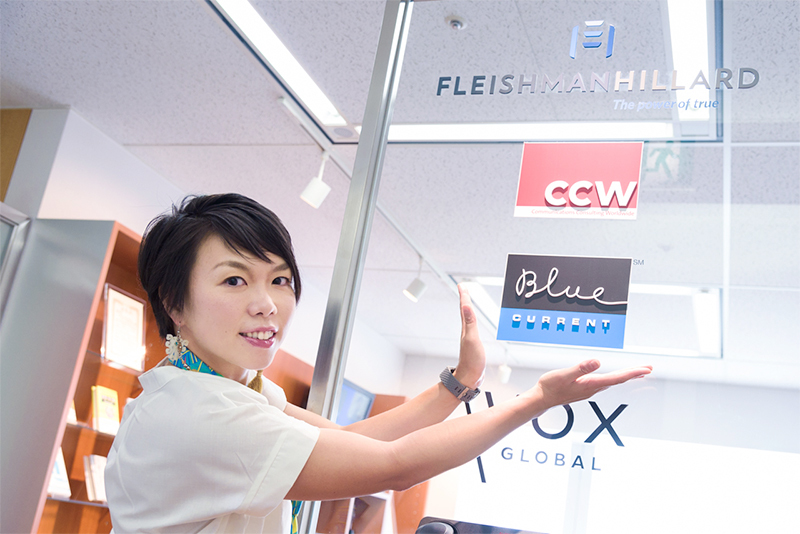
Was the Grand Prix win for "FEARLESS GIRL" inevitable?!
Izawa: Hello, Mr. Honda. Cannes was intense again this year, wasn't it?
Honda: Hello, Izawa. This was my first time participating as a juror, and it was truly an electrifying Cannes. During the six-day judging period, the only time I saw sunlight was during lunch breaks.
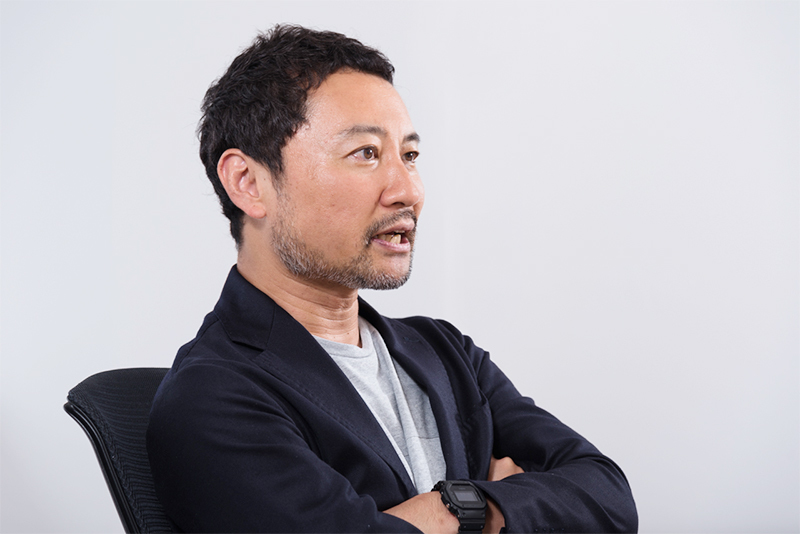
Izawa: I heard this year's PR Lions had a total of 2,208 entries. Narrowing that down to less than 10% for the awards must be incredibly difficult. How many awards were given out this year?
Honda: First, we spent three days narrowing the entries down to a longlist (228 this year). Then, we spent a full day selecting the shortlist (128 this year) for the press announcement. After that, we spent another two days choosing the winners. This year, we selected 17 Gold, 32 Silver, 50 Bronze, and one Grand Prix. The total number of awards is about 4% of the entries.
Izawa: Still a very narrow gate, isn't it? The Grand Prix winner was "FEARLESS GIRL" by STATE STREET GLOBAL ADVISORS (agency: McCANN NEW YORK). This was a multi-winner, also taking Grand Prix in other categories (Titanium, Outdoor, Glass Lions). Did it win the PR Lions Grand Prix easily?
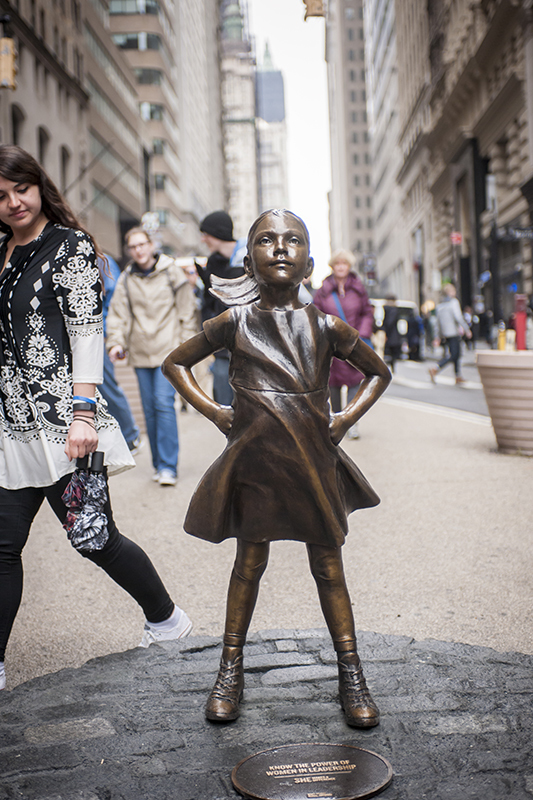
STATE STREET GLOBAL ADVISORS | McCANN NEW YORK
Honda: This year had so many strong entries that it was difficult to rank them, and the discussions took a long time. "FEARLESS GIRL" and "MEET GRAHAM" were competing head-to-head for the Grand Prix.
Izawa: Whoa, that's breaking news that hasn't been reported anywhere yet! Please tell us how each entry was evaluated and how the final award decision was made.
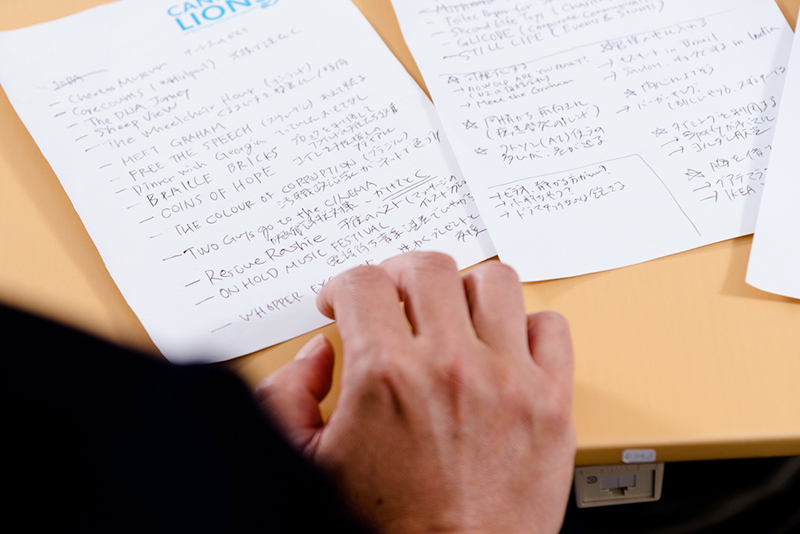
Honda: "FEARLESS GIRL" was strong because it tackled gender, a theme inextricably linked to all humanity. Just as the Cannes Lions established the Glass Lion award in 2015 to honor "creativity that breaks down gender discrimination and prejudice," it's clear that among the many UN-level social issues, gender issues are given very high priority.
Izawa: In that sense, was winning the Grand Prix in four categories an inevitable outcome?
Honda: There might have been a relatively solid foundation for attention. Regarding the PR Lions, corporate "Brave" initiatives have been a key focus in judging over the past few years. Within that context, the fact that they executed this campaign in the financial industry—often considered a male-dominated business world—without fearing backlash or criticism was a major point. Also, while this initiative is often perceived as being executed by the McCANN NEW YORK ad agency, it was actually a joint entry with the in-house PR department of STATE STREET GLOBAL ADVISORS. Essentially, it was the company's own PR department. In Japan, PR departments often have a strong defensive image and tend to be hesitant about initiatives that might spark controversy or criticism. But with "FEARLESS GIRL," the PR department itself took on the challenge with remarkable boldness. That attitude was also highly valued.
Izawa: I see... It was surprising that the PR department itself joined in to "raise questions" for the financial industry and the business world at large, and the execution was brilliant. Indeed, the idea of placing a small statue of a girl facing off against the massive bronze bull statue, a symbol of Wall Street, is a clever use of context. In stock market terms, an upward trend is called a bull market.
Honda: Exactly. Simply placing the statue in an empty space wouldn't have worked. Positioning it opposite the universally recognized "Charging Bull" was truly masterful PR.
"MEET GRAHAM" excels with its meticulously calculated "creepiness"
Izawa: The rival entry "MEET GRAHAM" also won the Grand Prix at Lions Health and received high praise in other categories too.
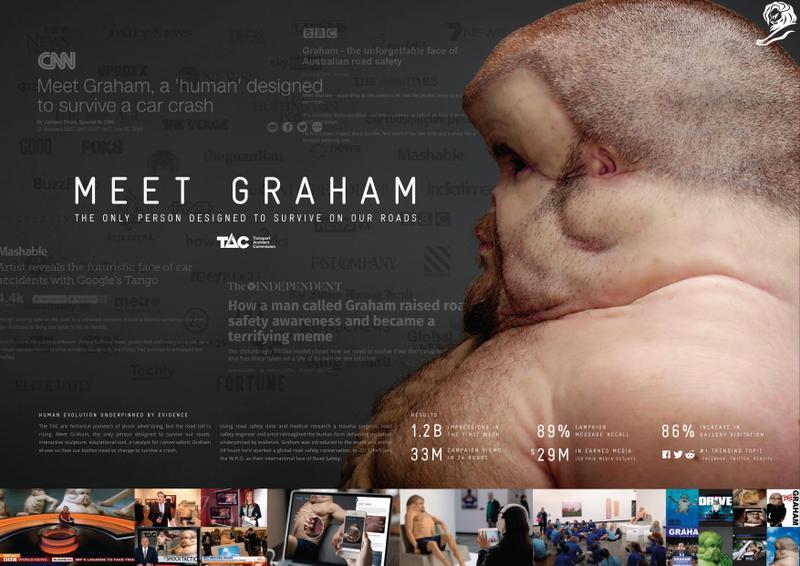
MEET GRAHAM
TRANSPORT ACCIDENT COMMISSION VICTORIA | CLEMENGER BBDO MELBOURNE
A human model designed to remain uninjured in any traffic accident was co-developed by a university professor, a doctor, and an artist. Named "Graham," this grotesque human features a skull designed to absorb impact, along with enlarged tissue and thick skin. Displayed in museums and public institutions to convey the horror of traffic accidents and the importance of safety, the exhibit attracted approximately 300,000 visitors (one in six people in the target area).
Honda: "MEET GRAHAM" was an entry by an agency (CLEMENGER BBDO MELBOURNE) for a group supporting road safety in Victoria, Australia. It was an initiative to raise awareness about the "invisible" dangers of road safety and traffic accidents. The idea of "visualization" and the craftsmanship behind its execution were truly outstanding.
Izawa: Public sector initiatives often feel like they have to deliver "do-good" messages, so they tend to favor "smart" or "model student" approaches—the conventional, safe route. But this was truly unique, even shocking in its visuals.
Honda: In this age of information overload, unless something possesses overwhelming beauty that surpasses everything else, simply beautiful or pretty things get ignored. Instead, things that evoke a sense of "unease" or "discomfort" are far more likely to stick in people's minds. If you promote traffic safety using conventional methods, it gets ignored. But by "visualizing" a human who absolutely never gets injured in a traffic accident, you leave a powerful impression on the viewer. Moreover, this wasn't just designed to be grotesque; it's based on big data about traffic accidents. PR values facts, so that aspect was also highly regarded.
Izawa: That's meaningful use of big data.
Rather than fighting competitors, we should compete on a bigger stage!
Izawa: Still, "MEET GRAHAM" is a statue that could haunt your dreams... It gives the exact opposite impression of the "FEARLESS GIRL" sculpture. ...Huh? Both pieces competing for the Grand Prix are "artificial creations," aren't they?
Honda: Exactly! They both used "artificial creations," but as Izawa just said, they're truly contrasting not just in appearance but in the very core of their ideas.
Izawa: What do you mean?
Honda: How do you define the "idea" in PR Lions?
Izawa: That's something I always get confused about. It's a tough question. What exactly is a PR-like idea...?
Honda: Going through this judging process made it clearer for me. In PR Lions, the idea is the "legitimacy" and "surprise" that emerge when you align the campaign's overarching goal—like solving a social issue—with your company's domain.
Izawa: So for "FEARLESS GIRL," it's about why State Street Global Advisors is tackling the major goal of advancing women's status in the business world. That's the "legitimacy" and "surprise," right?
Honda: Exactly. At first glance, a financial company tackling a social issue like women's advancement seems like a different field, or a distant connection. But considering various contexts—like how the financial industry is particularly male-dominated, or how a bull market is symbolized by a bull—there's a "legitimacy" to a financial company addressing this issue. Yet, it's also "unexpected." The greater the distance between the grand objective and the company's core domain, the more surprising and convincing the connection becomes—making people exclaim, "Why didn't I think of that?" That, I believe, is one form of the "idea" as described in PR Lion.

Izawa: On the other hand, "MEET GRAHAM" is a campaign by an organization that fundamentally champions road safety as its grand purpose. So while it has legitimacy, it lacks that element of surprise, right?
Honda: That represents another form of "idea." In other words, "MEET GRAHAM" was praised for its "expressive" idea—how ingeniously it was presented. People are surprised and convinced by the "expressive idea" of creating grotesque human figures to advocate for traffic safety, thinking "That's the way to do it!"
Izawa: I see!!!!!! So companies whose core business lies in a different domain from the overarching goal need to focus their ideas on "legitimacy" or "surprise" – why they should tackle it. Meanwhile, companies whose core business aligns with the overarching goal need to focus their ideas on "expressiveness."
Honda: Exactly. The relationship between the company and its grand purpose should determine the direction ideas should take.
Izawa: That's incredibly insightful. Deciding which direction will make people think "Why didn't I think of that?!" is crucial. But for companies outside the Public Sector, choosing which theme to showcase their presence with seems tricky...
Honda: It's crucial to be conscious of what kind of cast member your company can be when a story unfolds on a stage. The stage setting and cast configuration are the ideas, not the peripheral projects. To achieve this, you must correctly grasp what role your company plays in society. Moreover, it shouldn't just be about "already having role A," but also thinking about the future – "we want to become role B, and we can become it." In that sense, "FEARLESS GIRL" was judged more deserving of the Grand Prix because it expanded the role of a financial company in society into the future.
Izawa: In that sense, it seems difficult to win the Grand Prix without connecting to a social issue.
Honda: Of course, it's not impossible. But social issues tend to make for a more compelling stage than competing against rival companies. I think the perspective of "how to compete on a bigger stage" is also crucial in PR Lions. PR Lions now heavily emphasizes "Earned at the Core" – whether the core of the idea is PR-worthy. To break it down further, it's about whether the core idea is a theme that captures public interest, meaning whether it connects with the "imagination" of each individual consumer.
Izawa: I see. So, rather than competing with rivals, setting the stage with more social themes—themes closer to people's lives—makes it easier to stimulate imagination and capture public interest. Consequently, it tends to be highly valued at the PR Lions... I understand perfectly now. Thank you, Honda-san!
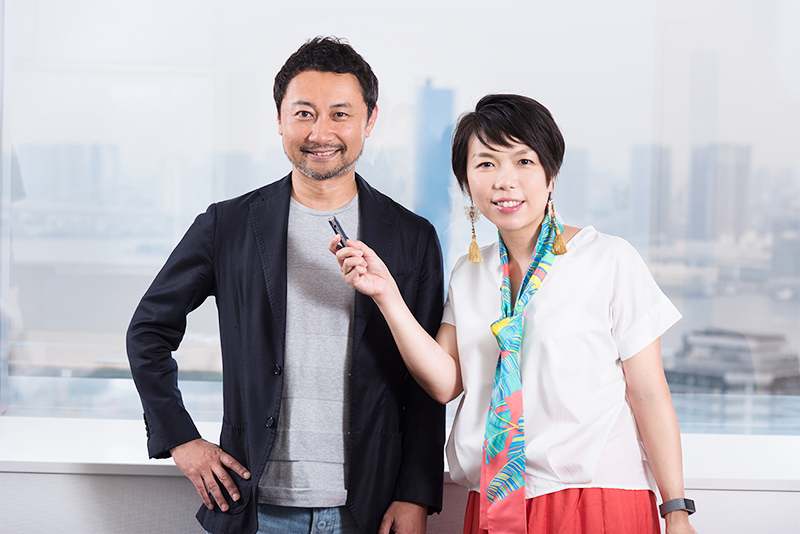
Izawa's "Final Thoughts"
This year, it became clear once again that to be recognized at the PR Lions, a connection to social issues is essential. This is because if you remain confined to the stage of "challenges for the company," it becomes merely a contest of "expressive power" – how well the company performs its inherent role. However, stepping onto the broader stage of "challenges for society" and "challenges for the company" introduces a new dimension of competition: beyond existing roles, it asks what role the company should play in society.
That new dimension is defined by "legitimacy = why they should play that role" and "surprise = who would have thought they'd take on such a role?" When you consider that competing on "legitimacy" and "surprise" alongside "expressive power" feels more "true to PR," you have to agree, right?
But entries leaning more towards marketing, like the " CHEETOS MUSEUM " (CHEETOS|GOODBY SILVERSTEIN & PARTNERS), also won Gold. This shows that if you hone your "expressiveness" to the extreme, you might just break through the big barrier of whether or not a social issue is involved. And if you think about it, the "CHEETOS MUSEUM" is also "Earned at the Core," right? It takes the childhood experience—that moment when everyone asks, "Doesn't this Cheetos look like...?"—and makes it the core idea, directly tapping into people's imagination.

Looking at Cannes, entries tied to social issues stand out, so it's easy to focus solely on "big stages." But perhaps a big stage isn't the prerequisite. If you can find a connection to social issues as an extension of solving your company's challenges, leverage that stage. If not, maximize the stage you're already on. What matters is considering, from the perspectives of "surprise," "legitimacy," and "expressiveness," "Which stage can best capture the public's interest and spark their imagination? And as a result, can it engage and move society?" Herein lies the hint for PR ideas.
Was this article helpful?
Newsletter registration is here
We select and publish important news every day
For inquiries about this article
Author

Honda Tetsuya
Honda Office Co., Ltd.
President and CEO / PR Strategist
A PR expert selected by PRWEEK magazine as one of the "300 Most Influential PR Professionals in the World." Joined FleishmanHillard, the world's largest PR firm, in 1999. Founded Blue Current in 2006 and assumed the role of CEO. Published "Strategic PR" (ASCII Shinsho) in 2009. Commenced activities as Honda Office Co., Ltd. in 2019. Relocated operations to Singapore in 2023.

Yumi Izawa
After joining Dentsu Inc., she worked in the Media Relations Department handling promotions for companies and organizations. In 2011, she launched the owned media platform "Weekly?! Izawa's Eye" and became its editor-in-chief. Its features covering and analyzing the latest PR cases domestically and internationally, along with interviews delving into prominent figures, gained popularity. Currently, as an editor, writer, and PR planner, he manages corporate owned media and provides consulting services. He also contributes to media outlets within the PR industry and writes a serialized column for Toyo Keizai Online.